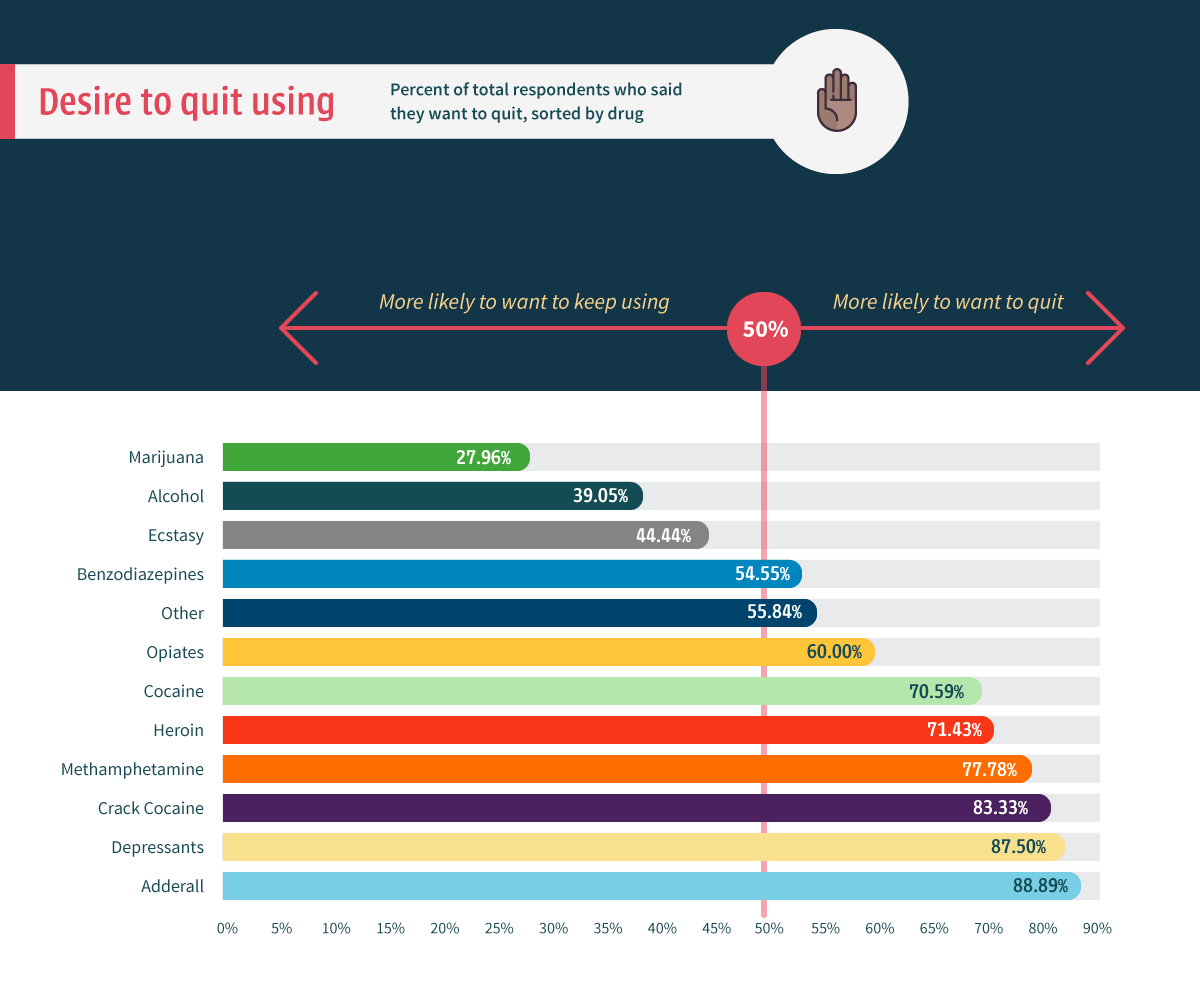
In 2024, more than 80,000 people across the country died from fatal drug overdoses.
At the heart of this crisis is the grim reality that most people in America use drugs for the first time while they’re teenagers, and that drug use in general is highest among people in their late teens and early twenties.
To understand more about substance abuse in America, we surveyed 2,000 people across the country about their history and life with illicit substances, including alcohol. We polled them about the drugs they’ve been using the longest, the ones they wish they could quit, and the substances that started it all. Curious what we uncovered? Read on to find out. 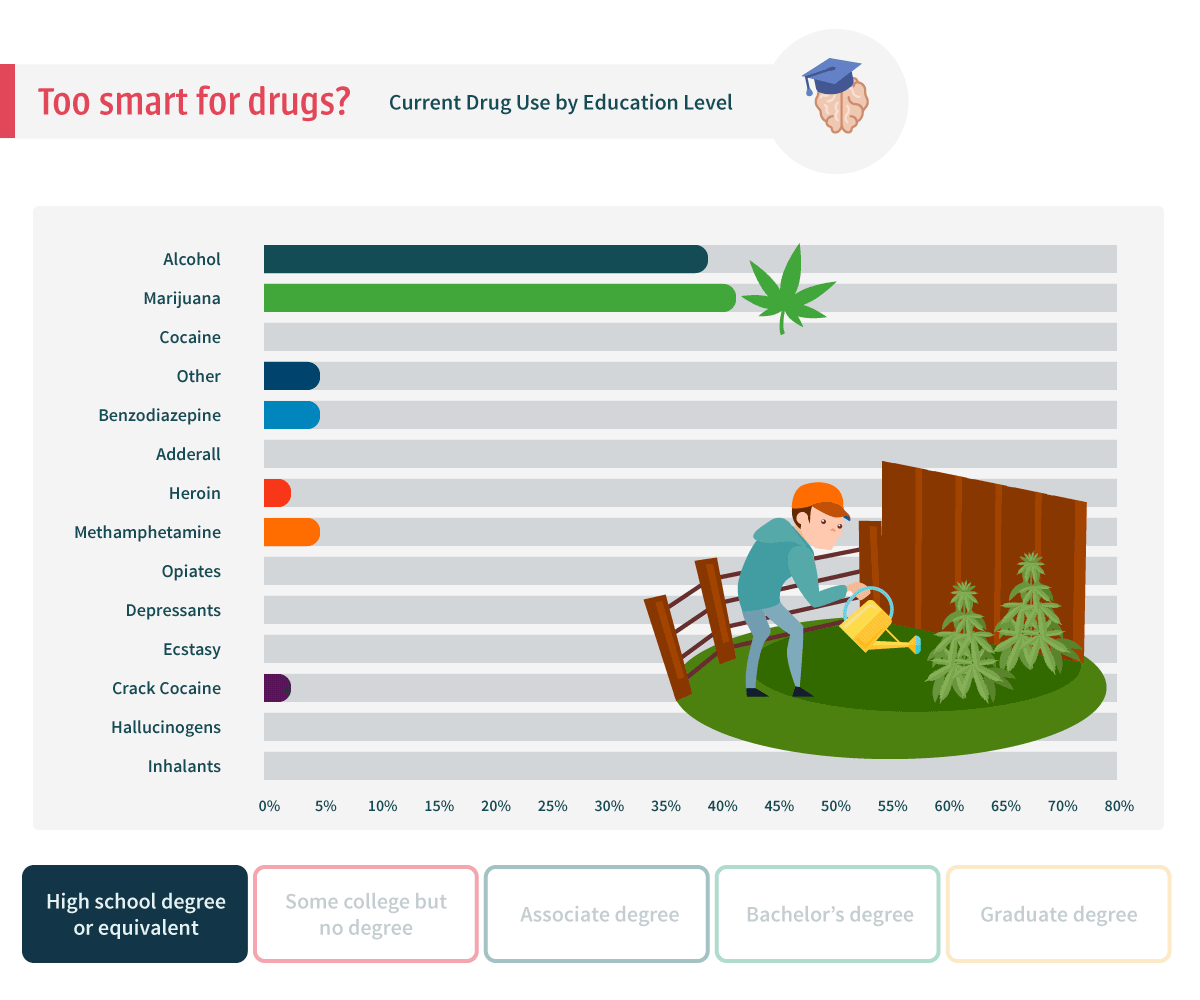
Substances With the Most Long-Term Use
Our study found various trends of drug abuse across the 2,000 people we polled when we asked them to identify their highest level of education.
For those we polled with any level of college education, we found that alcohol was the most commonly misused substance over the longest period of time. According to the National Institute of Health (NIH), nearly 80% percent of Americans over the age of 12 reported that they’d consumed alcohol at some point in their lives. In 2023, the NIH’s National Survey on Drug Use and Health also found that 28.9 million people ages 12 and older had alcohol use disorder (AUD) within the past year, but only 2.3 million received treatment for it.
Our study found that the prominence of alcohol consumption increased among people with higher levels of education, but that overall marijuana use decreased. We found that more than half of respondents with Associate Degrees reported having consumed alcohol for the longest point in their lives, while more than two-thirds of respondents with Bachelor’s Degrees said the same, followed by more than 70% of those we surveyed with Graduate Degrees. We found similar trends among cocaine use, which also rose as educational levels increased.
Drugs With a Desire To Quit
We asked the Americans we surveyed to what extent they desired to quit using drugs or substances they were currently consuming regularly.
Fewer than half of the 2,000 people we polled who told us they regularly consumed substances, including marijuana, alcohol, and ecstasy, said they actually wanted to quit. Long-term use of both marijuana and alcohol can have lasting effects on the brain and other organs, including the parts of the brain that control memory, overall brain development, and the potential to develop severe mental defects.
Ecstasy (or Molly), when pure, is composed of 3-4,methylenedioxy-methamphetamine, or MDMA. Unfortunately for the millions of people consuming this “party drug”, on its own, it can have serious health effects including depression, anxiety, and memory or attention deficits. In some cases, ecstasy is often cut with even more dangerous drugs (like fentanyl), turning these so-called recreational drugs lethal.
Our survey also revealed that a majority of people using certain substances told us they wished they could stop. More than three-quarters of the 2,000 people we polled who admitted missing illicit drugs, including methamphetamine, crack cocaine, depressants (like tranquilizers), and stimulants, told us they wanted to quit using them. In some cases, wanting to quit can seem easier said than done. Withdrawal symptoms from cocaine can include depression, fatigue, and insomnia. For those looking to quit, government-approved medicines as well as therapy options can help them overcome the challenges of withdrawal.
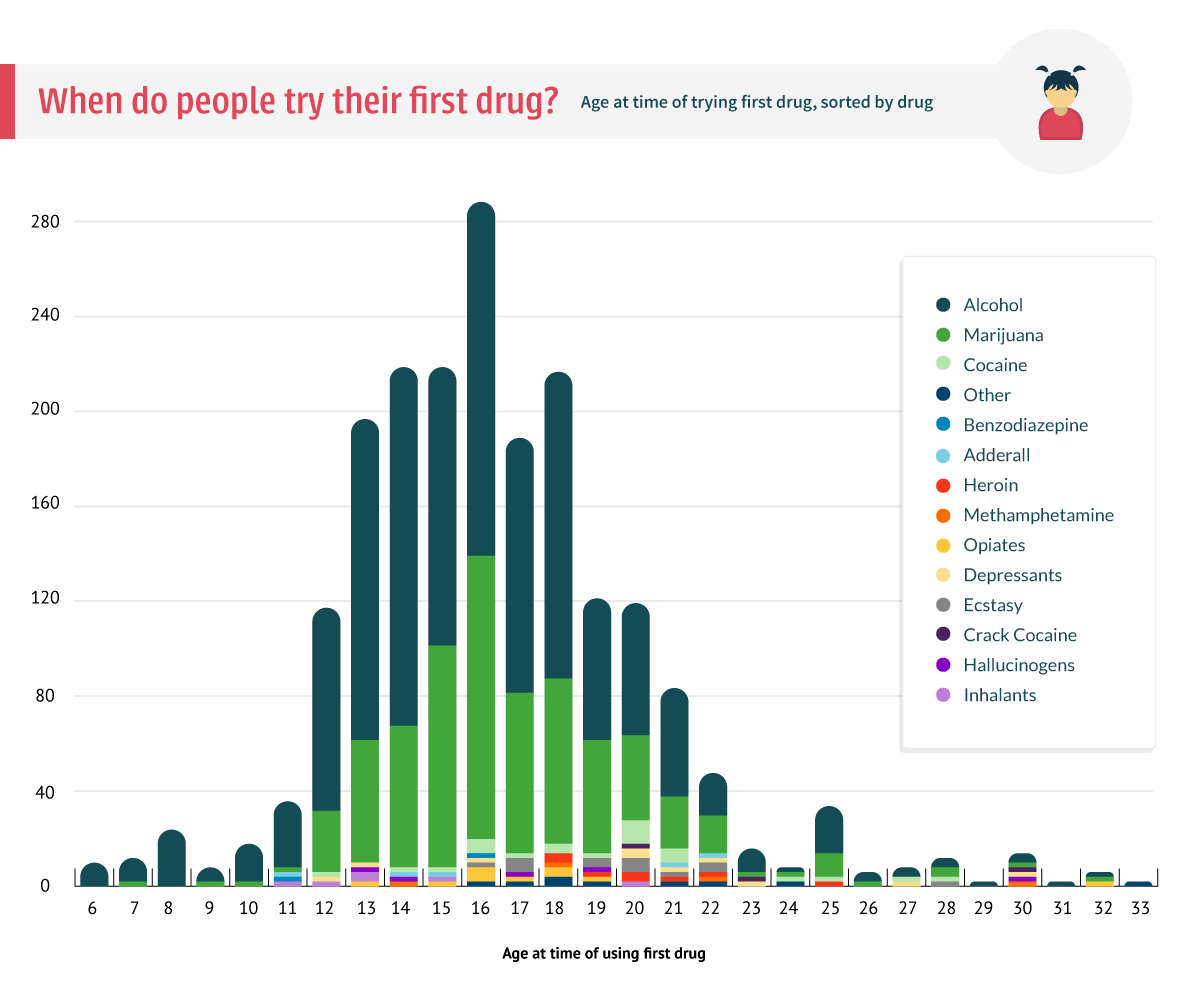
Young Users
People we polled about their history of substance abuse told us the most popular time to try alcohol for the first time was between the ages 12 and 19. Research has shown that exposing children to alcohol at home in casual settings is more likely to result in kids having had full drinks or gotten drunk before entering high school.
The age of 16 was also the most common response for people having tried marijuana for the first time, while 20 was the most common age for people in the U.S. trying cocaine and ecstasy for the first time. A 2022 CDC survey found that more than 30% of high school seniors reported using marijuana within the past year, and more than 6% used it daily over the past month. 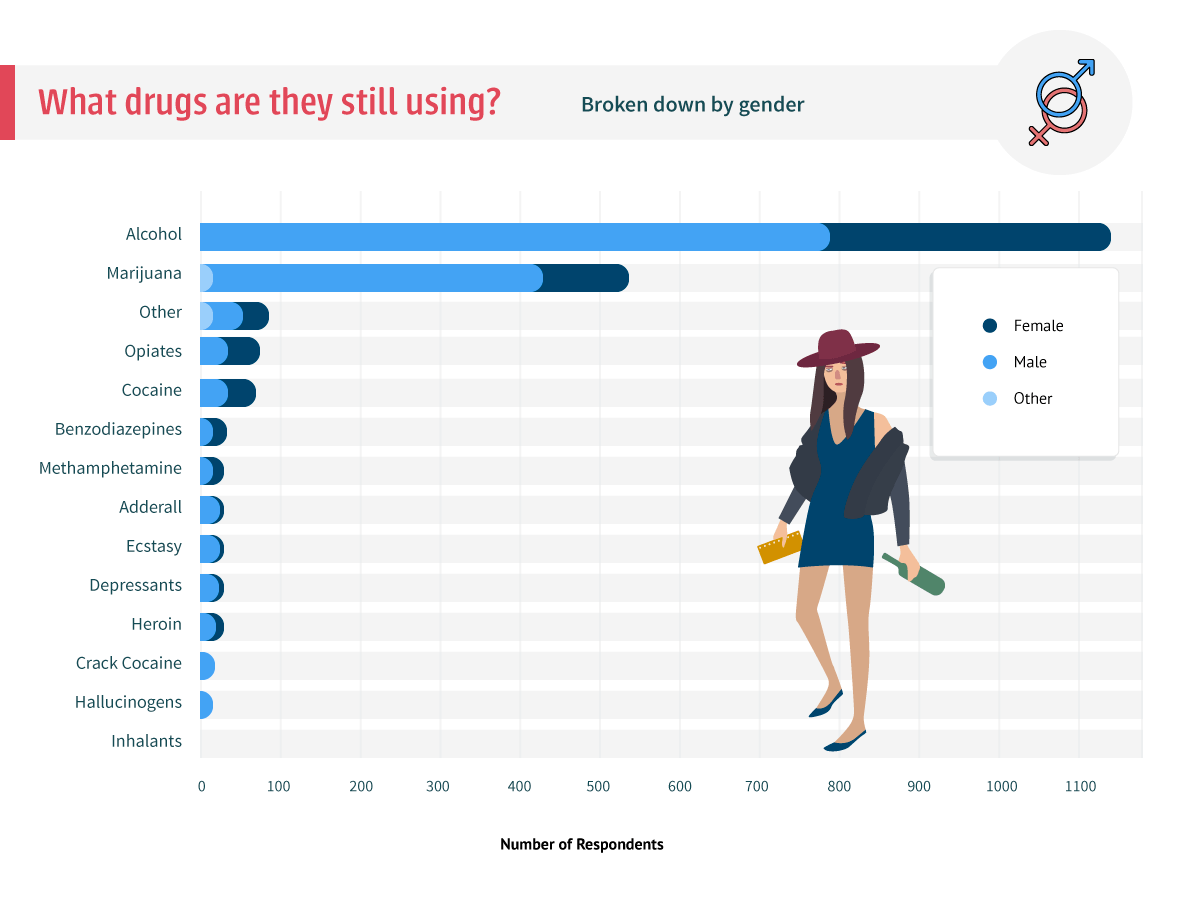
The Impact of Drugs on Men and Women
Based on our survey, we found that men were more prone to long term alcohol and marijuana use than women. We also found that women were more likely to indicate using illicit substances, including opiates, benzodiazepines, and methamphetamine over longer periods of time than men were.
Research has found that certain types of drugs may affect women differently than men. Prescription painkillers, antidepressants, and other drugs that impact the brain have been found to have gender-specific effects. When it comes to benzodiazepines like Xanax, men’s kidneys may be able to filter the drugs out faster than a woman’s, meaning that women may need to wait longer before taking multiple doses. Benzodiazepines can also linger in a woman’s system longer than a man’s, making lower doses potentially more toxic.
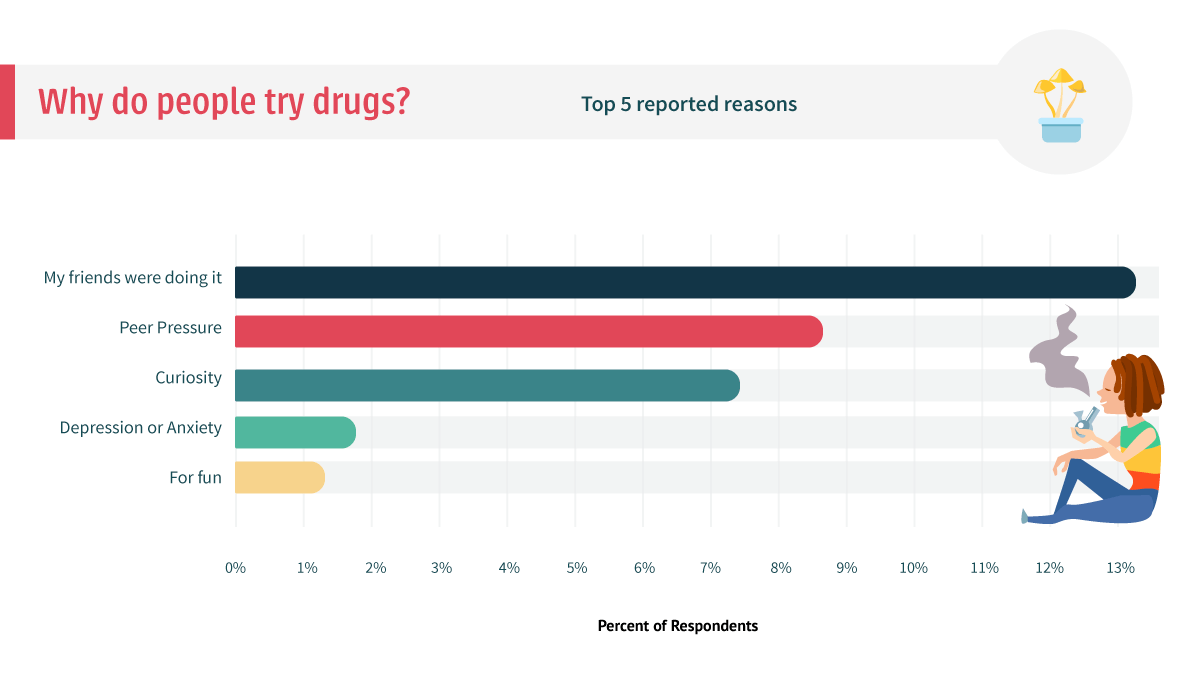
More than one in 10 people we polled told us they started either drinking alcohol or doing drugs because their friends were doing it, and nearly one in 10 said they started because of peer pressure. This pressure may not exclusively exist between the people they interact with regularly, as research has found that some teens using social media sites like Facebook or Instagram are also more likely to use drugs. Experts on the subject suggest that the idea of peer pressure can come from within, where a young person believes their friends or peers have done something, without really knowing that it’s happened.
This pressure can still feel very real, however, and can follow young people into adulthood. Fewer than 8% of our survey participants told us that they started doing drugs because they were curious, and fewer than 2% told us they started using drugs just for fun.
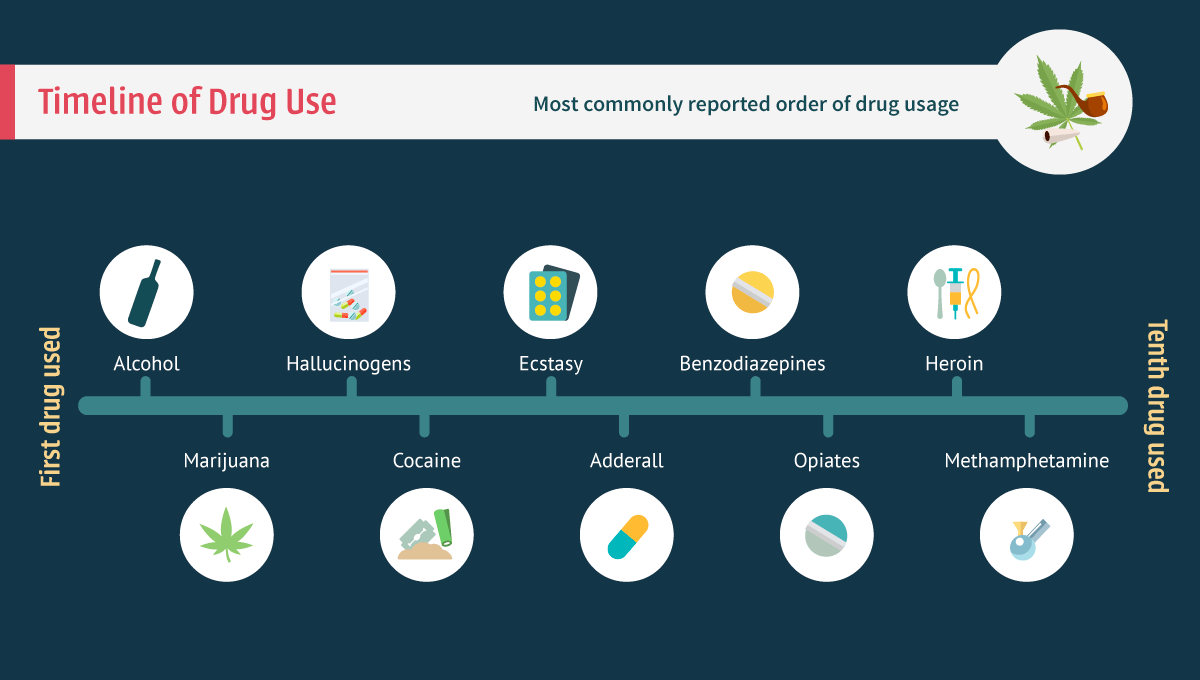
New Updates on the Gateway Drug Theory
The gateway drug theory is a long-held belief that trying certain substances at a young age, such as marijuana, tobacco, or alcohol, makes a person more likely to try more illicit substances, like heroin, as they get older. For decades, this theory formed the basis of how we looked at adolescent drug use. It was also the cornerstone of a majority of anti-drug campaigns.
More recently, however, researchers have uncovered new discoveries about the adolescent brain, and the progression from “safer” drugs to harder ones is not as straight or streamlined as once thought. One study by the Drug Policy Research Center (DPRC) found that an individual’s exposure to certain opportunities and their unique propensity to use drugs may be a more likely indicator of future drug use. This new theory suggests that several factors, such as peer influence, socioeconomic status, and personal predispositions, are better indicators of future substance use behaviors than early drug use alone.
Still, this doesn’t mean the gateway theory is completely without basis. More recent drug initiation trends, such as the vape-to-opioid pipeline, reveal that early exposure to certain drugs can expose teens to more dangerous substances, even without their knowledge, and increase their risk of developing substance use disorder. Specifically, the rise of vape pens laced with substances like MDMA and fentanyl means that young people are being exposed to harder drugs at an earlier age.
Resources for Parents
Drug use can be a challenging topic to approach with your teen, but there are resources that can help. A great place to start is the National Institute on Drug Abuse (NIDA)’s Parents and Educators page. Here, you can find interactive materials that talk about hot topics that affect young people, such as using drugs to cope with mental health conditions like anxiety or depression. There are also links to recent studies and news reports, as well as lesson plans, conversation starters, and educational videos to watch together.
Schools can offer their own support, as well. If you’re concerned that your teen might be using drugs or exposed to drugs in an academic setting, reach out to their teachers and guidance counselor. They can put measures in place to mitigate those risk factors and help your child thrive. Many evidence-based therapy programs also offer in-school programs to make their services more accessible.
Methodology
We surveyed 2,000 current drug users to ask about their history of drug use, to find what drugs are the most common. Our survey allowed for respondents to keep reporting different drug use, up to 10 different drugs. From this, we created a map of the most common drug progression.
Want to use our study?
Please feel free! All that we ask is that you include a link back to this page so your readers can view the full study.

